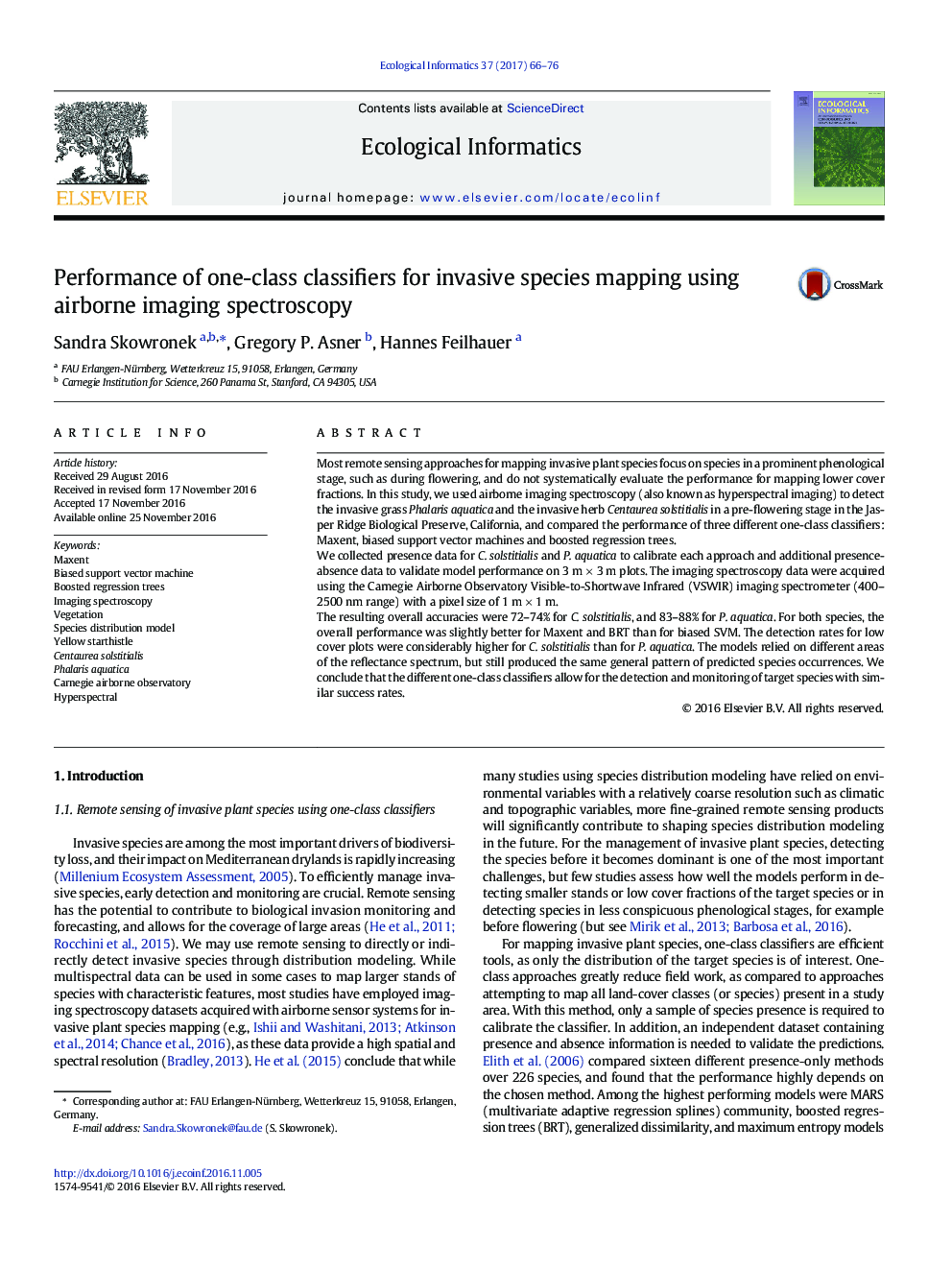| کد مقاله | کد نشریه | سال انتشار | مقاله انگلیسی | نسخه تمام متن |
|---|---|---|---|---|
| 5741962 | 1617197 | 2017 | 11 صفحه PDF | دانلود رایگان |
- Similar overall performance of all three tested classifiers
- Success of mapping low cover fractions is higher for Centaurea solstitialis.
- Centaurea solstitialis can be mapped before flowering.
- Different classifiers rely on very different areas of the spectrum.
Most remote sensing approaches for mapping invasive plant species focus on species in a prominent phenological stage, such as during flowering, and do not systematically evaluate the performance for mapping lower cover fractions. In this study, we used airborne imaging spectroscopy (also known as hyperspectral imaging) to detect the invasive grass Phalaris aquatica and the invasive herb Centaurea solstitialis in a pre-flowering stage in the Jasper Ridge Biological Preserve, California, and compared the performance of three different one-class classifiers: Maxent, biased support vector machines and boosted regression trees.We collected presence data for C. solstitialis and P. aquatica to calibrate each approach and additional presence-absence data to validate model performance on 3 m Ã 3 m plots. The imaging spectroscopy data were acquired using the Carnegie Airborne Observatory Visible-to-Shortwave Infrared (VSWIR) imaging spectrometer (400-2500 nm range) with a pixel size of 1 m Ã 1 m.The resulting overall accuracies were 72-74% for C. solstitialis, and 83-88% for P. aquatica. For both species, the overall performance was slightly better for Maxent and BRT than for biased SVM. The detection rates for low cover plots were considerably higher for C. solstitialis than for P. aquatica. The models relied on different areas of the reflectance spectrum, but still produced the same general pattern of predicted species occurrences. We conclude that the different one-class classifiers allow for the detection and monitoring of target species with similar success rates.
Journal: Ecological Informatics - Volume 37, January 2017, Pages 66-76
